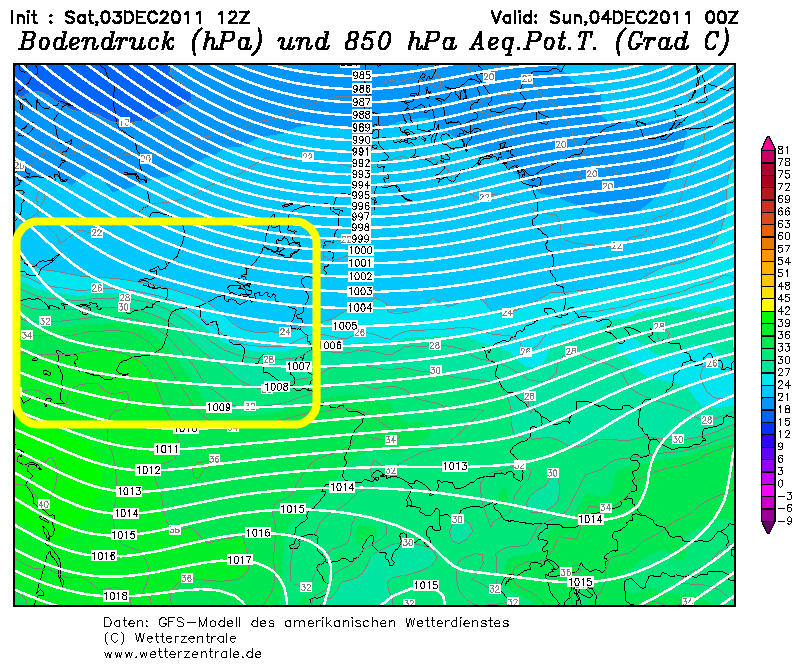Baroclinity
Under baroclinicity is understood that surfaces of equal pressure ( isobars ) and the same temperature ( isotherms ) are not parallel, so that they intersect. In a temperature area, therefore, there exists a pressure gradient and vice versa. The counterpart to the baroclinicity is the barotropy.
Alternatively, one can also define that in a layer of the printing barotropic is a unique function of temperature. In baroclinically layered air mass, the occurrence of laterally directed horizontal forces thus results in the formation of flow as well as in the horizontal direction. This leads to the flows in the atmosphere and in the ocean are not horizontally constant. A baroclinic stratification gives rise to circulation acceleration in the form of cyclones ( vortex -like flow fields), and dynamical instabilities.
It is important to note that the images used to illustrate not correspond to reality. They show extremely exaggerated inclinations, but most are very small and therefore difficult to measure in reality.
Baroclinicity in the atmosphere
Baroclinic layers typically occur in the range of front, between the air masses at different temperatures, on. They play a crucial role in atmospheric circulation also in the development of cyclone - anticyclone systems in the area of the west wind drift zone.
Baroclinicity in the ocean
Starting from the baroclinic stratification in the ocean and the basic equations of geostrophy, the relative flow rates of the density difference at two points can be calculated. In the ocean, one starts from baroclinic stratification in faster surface currents.
To subscribe:
The isopycnals ( surfaces of equal density) and isobaric surfaces ( surfaces of equal pressure ) are inclined to each other and intersect here. The isobaric surfaces are in shallow depths parallel to the sea surface. With increasing depth, however, their tendency decreases since the average density of the water column is greater than the point A than B. Since the isobaric surfaces will always be horizontal with the depth of the pressure gradient and the geostrophic flow associated with it continually until when the Isobarenoberflächen from a certain depth are horizontal, geostrophic currents no longer exist.
Further Reading
- Walter Roedel: Physics of our environment: the atmosphere. Springer Verlag, 2000. ISBN 3-540-67180-3
- Gösta H. Liljequist and Cehak, Konrad: General Meteorology. Springer -Verlag 1984. ISBN 3-540-41565-3
- Meteorological concept
- Oceanography









